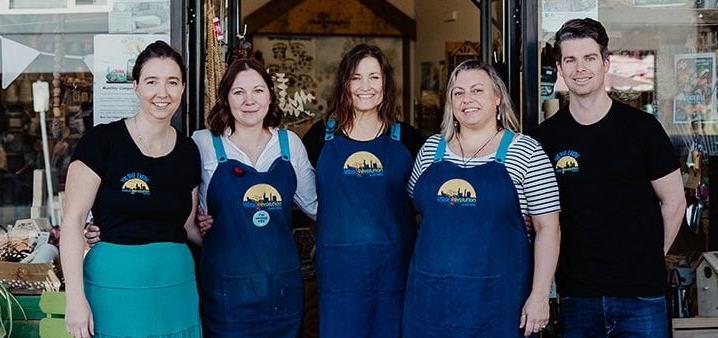Bicarbonate of soda has been used for centuries for all kinds of household, personal and cooking purposes. In this article, learn how to use bicarb soda for dish washing, household cleaning, gardening, rust & stain removal, pest control and more.
If you haven't already, be sure to read our PART 1 bicarb article: What Is Bicarbonate of Soda?
Sodium Bicarbonate is a cheap, safe, toxic-free and effective way to clean the whole house; great for removing dirt, grease, bacteria and odours. it can easily replace your commercial chemical cleaners and is better for your health and for the Earth! It is also totally natural so can be used in the garden with no threat to the environment and is so cheap that needing large quantities is no problem.

1. How to Use Bicarb Soda for Dish Washing
- Dish washing*: add 1 Tbs bicarbonate of soda to a sinkful of hot water with the juice of half a lemon for effective, eco-friendly washing up. You can also add bicarb even if you're using regular dishwashing liquid for an extra cleaning boost, plus it has an added hand moisturising effect.
- Dishwasher*: replace dishwasher tablets with 2 Tbs bicarbonate of soda and 2 Tbs borax for a full load.
- Soak dirty cookware* in a basin of hot water with 2-3 Tbs bicarbonate of soda for ~1 hour for easy cleaning.
- Remove stubborn marks: add dry bicarb to a damp dishcloth and scrub to remove stubborn marks - works great on crockery, pans*, glass and plastic cookware.
- Reuse rubber gloves: sprinkle a little bicarbonate of soda into rubber gloves after taking them off to absorb dampness and keep them fresh.
*Bicarb is not suitable for non-stick surfaces
2. How to Use Bicarb Soda for Household Cleaning
- Wipe surfaces with a damp cloth sprinkled with dry bicarb or mix a solution of warm water and bicarb. Rinse and dry after cleaning.
- For especially dirty surfaces (e.g. stovetops and ovens), make a paste of bicarb and water and use like cream cleaner on a sponge or cloth. Alternatively dampen the surface, sprinkle with bicarb and leave for half an hour before rubbing clean and rinsing.
- Remove limescale deposits from taps and hard-water marks from shower screens with a mix of bicarb and a little vinegar, brush the fizzy paste on affected areas, leave for half an hour and gently rub and rinse clean.
- For the toilet, sprinkle bicarb around the bowl, leave for half an hour and then scrub with a toilet brush and flush. Add a little vinegar to the scrubbing stage for cleaning more stubborn marks.
- Clean drains by mixing two pars bicarb, two parts salt and one part vinegar, pouring down the drain, put in the plug and leave for half an hour, then run a hot tap to rinse.
Bicarb soda is great for benchtops, sinks, stove tops, ovens, microwaves, fridges, baths, basins, showers, floors and more. It is suitable for almost all surfaces, including metal, plastic, ceramic, enamel, wood, glass and fabric. It is not suitable for non-stick surfaces as it can damage a Teflon finish.
3. How To Use Bicarb Soda for Rust & Stain Removal
- Rust: wipe rusty metal furniture with a paste made from bicarb and a few drops of water on a damp cloth. Gently rinse and dry.
- Carpet stains: best results come from a fast response! If you spill grease or wine on carpet, sprinkle heavily with dry bicarb, brush it in and leave to absorb the stain for several hours. Sweep up the excess powder, dab with a solution of bicarb and warm water and then leave to dry completely before vacuuming the area.
- Other stains: bicarb soda is also great for removing kids 'artwork' from walls, cleaning up old or discoloured furniture, returning life to dull tiles, and reviving stained tile grout.
4. How To Use Bicarb Soda in the Garden
- Clean garden tools with a bicarb/vinegar paste to remove rust or prevent rust from forming while not in use. For really rusty tools, dip a pealed potato into dry bicarb and rub until they're shiny again!
- Line terracotta pots with a dusting of bicarb before adding soil to keep it fresh and kill any lingering bacteria or diseases from the last plants.
- Use as a natural fungicide against mildew, mould and other plant diseases. Mix 0.5-1 cup bicarb in 2.5L water and spray on affected plants.
- Revive lawn by spraying with 1 tablespoon bicarb to 4L water. This will kill off mould or mildew and act as a lawn tonic.
- Test the alkalinity of soil by adding a pinch of bicarb to 1 tablespoon of soil. If it fizzes, the soil pH is very low (acidic). Add a weak solution of bicarb water to raise the pH for plants that like alkaline soils like geraniums and hydrangeas.
- Tomatoes love bicarb soda! Sprinkle a little around their roots regularly to produce a sweeter harvest.
- Keep cut flowers fresh for longer by adding a small amount of bicarb to their water.
5. How To Use Bicarb Soda for Pest Control
- Deter ants by sprinkling dry bicarb across their paths. Also works to deter cockroaches in dark, damp corners of the house.
- Repel fleas by sprinkling bicarb on your pet.
- Keep slugs and snails out of the garden by sprinkling bicarb generously around the veggie patch.

Read on to Part 3 or back to Part 1 of our Bicarb article series to learn more uses of this cheap, safe and eco-friendly solution!
PART 1: What Is Bicarbonate of Soda?
PART 3: How to use bicarb soda for laundry, health and personal care
A great resource for even more information is the book 'Bicarbonate of Soda: Hundreds of Everyday Uses' by Diane Sutherland, Job Sutherland, Liz Keevill and Kevin Eyres






Juanita
January 19, 2021
I use sodium bicarbonate in many of the ways in this article. I have also recovered saucepans that have boiled dry and look like they are destined for the scrapheap as even serious elbow crease will not bring them back.
Add several spoonful of bicarb to water in the saucepan then bring to the boil and boil for 5-10 minutes. Most of the time the ‘baked on’ mess just wipes off, if it hasn’t already lifted during the boiling. For stubborn stains, the process can be safely repeated.